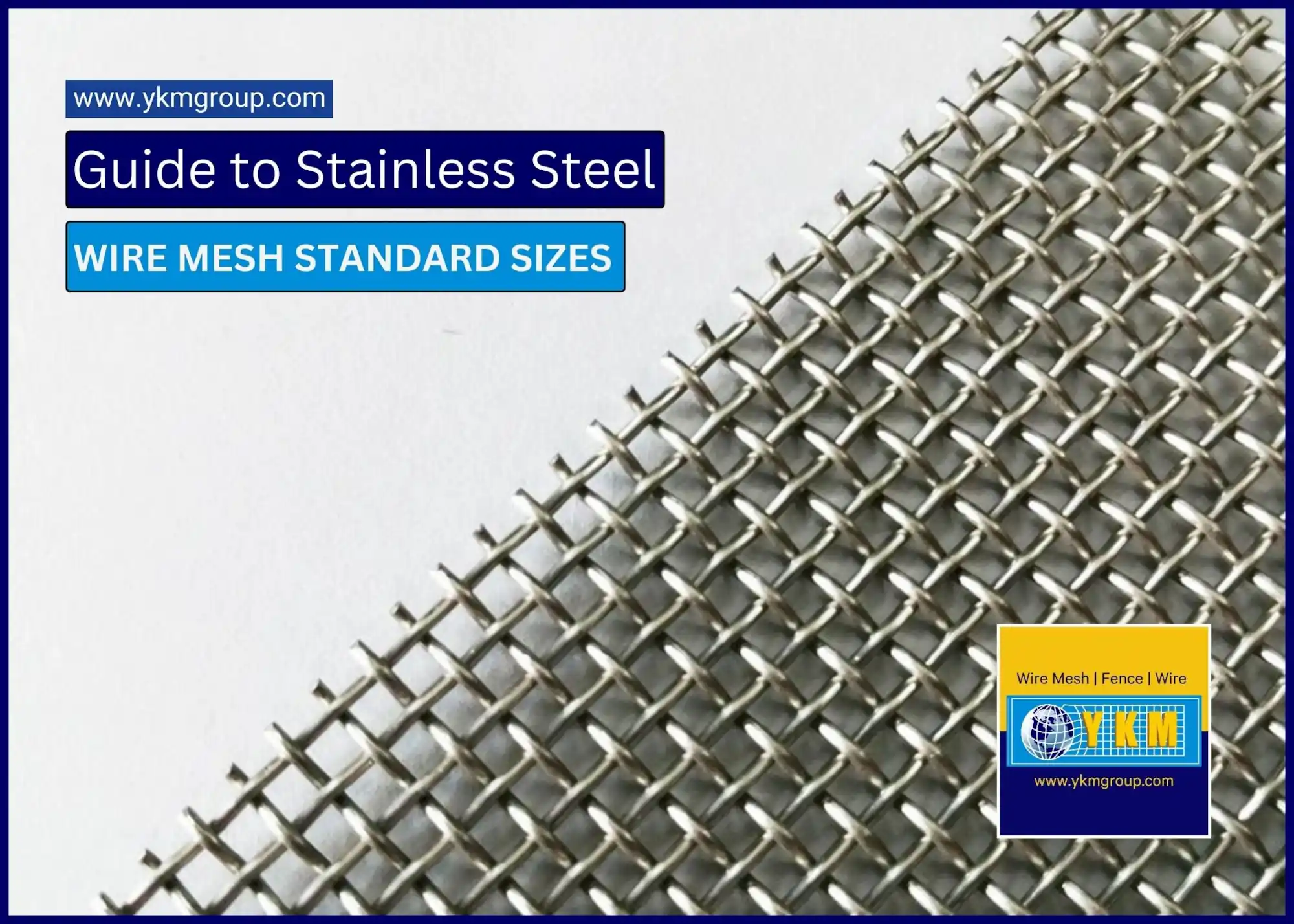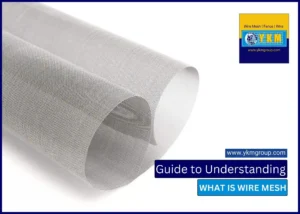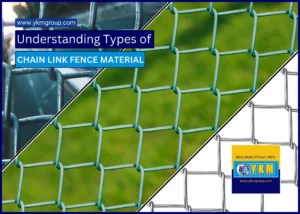Looking for the ultimate guide to stainless steel wire mesh standard sizes? Look no further! In this comprehensive article, we’ll cover everything you need to know about stainless steel wire mesh sizes, ensuring that you’re well-equipped to make informed decisions for your specific project or application.
Stainless steel wire mesh is a versatile material that offers durability, strength, and corrosion resistance, making it an ideal choice for various industries and applications. From filtering and screening to protection and support, the right steel wire mesh sizes can make a significant difference in achieving optimal results.
In this guide, we’ll walk you through the standard stainless steel wire mesh sizes, including their varying mesh counts and wire diameters. We’ll also explore the different weave types and how they impact the performance of the mesh. Whether you’re new to stainless steel wire mesh or a seasoned professional, we’ll provide the insights you need to choose the right size for your specific requirements.
Stay tuned as we dive deep into the world of stainless steel wire mesh standard sizes, ensuring that you have all the knowledge and expertise to make informed decisions. Let’s get started!
Importance of Understanding Stainless Steel Wire Mesh Standard Sizes
Standard stainless steel wire mesh sizes play a crucial role in the world of stainless steel wire mesh. They provide consistency and ensure compatibility across different applications and industries. By adhering to standard stainless steel wire mesh standard sizes, manufacturers and users can easily interchange meshes and components, saving time and resources.
One of the key advantages of standard sizes is the ease of sourcing materials. When the sizes are standardized, manufacturers can produce wire mesh in bulk, resulting in reduced production costs. This, in turn, leads to competitive pricing for customers. Additionally, standard sizes allow for better inventory management, as companies can stock and supply commonly used sizes without the need for custom orders.
Standard sizes also facilitate collaboration among different stakeholders. Engineers, architects, and designers can rely on consistent and predictable sizes when incorporating stainless steel wire mesh into their plans. This ensures that the mesh will fit seamlessly into the intended application, whether it’s a screen, filter, or structural element.
In summary, standard sizes in stainless steel wire mesh provide consistency, compatibility, cost savings, and ease of collaboration. Now, let’s explore some of the common standard sizes available in the market.
Common Standard Sizes for Stainless Steel Wire Mesh
Stainless steel wire mesh comes in a wide range of standard sizes, each designed to meet specific requirements. The steel wire mesh sizes is determined by two main factors: the mesh count and the wire diameter.
The mesh count refers to the number of openings per linear inch in the mesh. It is denoted by a number followed by “mesh” or “mesh/inch.” For example, a 10 mesh wire mesh has 10 openings per linear inch. The higher the mesh count, the finer the mesh.
On the other hand, the wire diameter refers to the thickness of the wire used in the mesh. It is typically measured in inches or millimeters. Thicker wires result in stronger meshes, while thinner wires create finer meshes.
Now, let’s take a closer look at some of the common steel wire mesh sizes available:
- 2 mesh – This is a coarse mesh with large openings, commonly used for heavy-duty applications such as security fencing and animal enclosures. The wire diameter is relatively thick, ensuring strength and durability.
- 10 mesh – This is a medium-sized mesh suitable for general-purpose applications such as insect screens, filtration, and ventilation systems. It strikes a balance between strength and fine filtration capabilities.
- 40 mesh – This is a fine mesh commonly used for fine filtration, sieving, and separation applications. It is often employed in laboratory settings, food processing, and pharmaceutical industries.
- 100 mesh – This is an even finer mesh used for precision filtration, particle separation, and fine screening. It finds applications in industries such as chemical processing, water treatment, and mining.
These are just a few examples of the many standard sizes available. It’s important to note that expert wire mesh manufacturers can produce custom sizes to meet specific project requirements. The choice of standard size depends on factors such as the desired filtration or screening level, the strength required, and the application at hand. Next, we’ll discuss some key considerations when choosing the right standard size for your needs.
Factors to Consider When Choosing when choosing from Stainless Steel Wire Mesh Standard Sizes
When selecting the right stainless steel wire mesh sizes, several factors come into play. Understanding these factors will help you make an informed decision based on the specific requirements of your project or application.
Filtration or Screening Needs
The primary purpose of stainless steel mesh cloth is often to filter or screen particles or materials. Consider the size of the particles you need to filter or screen. If you require finer filtration, a higher mesh count is necessary. However, keep in mind that higher mesh counts may reduce the flow rate or require more cleaning and maintenance.
القوة والمتانة
Assess the strength and durability requirements of your application. Thicker wire diameters provide greater strength, making them suitable for heavy-duty applications. For less demanding applications, finer wire diameters can be used to achieve the desired filtration or screening level.
Material Compatibility
Consider the chemical compatibility of the stainless steel wire mesh with the substances it will come into contact with. Stainless steel is known for its corrosion resistance, but certain chemicals or environments may require specific grades or coatings.
Environmental Factors
Evaluate the environmental conditions the wire mesh will be exposed to. Factors such as temperature, humidity, and exposure to UV radiation can affect the performance and lifespan of the mesh. Choose a standard size that can withstand the specific environmental conditions.
Budget and Cost Considerations
While stainless steel wire mesh standard sizes are generally more cost-effective, it’s important to consider your budget and cost constraints. Custom sizes may be necessary for unique applications but can be more expensive. Strike a balance between your requirements and budget to find the best solution.
By carefully considering these factors, you can narrow down your options and choose the right standard size that meets your specific needs. Next, let’s explore how to measure stainless steel wire mesh standard sizes accurately.
Advantages and Disadvantages of Different Stainless Steel Wire Mesh Standard Sizes
Fine Mesh Sizes
Fine mesh sizes refer to mesh with a high mesh count, typically ranging from 100 to 400 mesh. These sizes are commonly used for applications that require precise filtration or separation, where smaller particles need to be captured or retained. The fine mesh sizes offer several advantages, including:
a) Enhanced Filtration: Fine mesh sizes excel at capturing small particles, making them ideal for applications in industries such as pharmaceuticals, food processing, and water treatment. The small openings in the mesh effectively filter out contaminants, ensuring a high level of purity in the end product.
b) Smooth Surface: Fine mesh sizes are known for their smooth surface, which helps prevent clogging and ensures a consistent flow of material through the mesh. This is particularly important in processes that involve the filtration of viscous liquids or materials with fine particles.
c) High Strength: Despite their smaller wire diameter, fine mesh sizes maintain high strength due to their increased mesh count. This allows them to withstand pressure differentials and maintain their integrity even in demanding applications.
However, it’s important to consider the potential disadvantages of using fine mesh sizes:
a) Reduced Flow Rate: Due to their smaller openings, fine mesh sizes can restrict the flow rate of liquids or gases. This can lead to increased pressure drop across the mesh and may require additional considerations in the design of the filtration system.
b) Potential for Clogging: Fine mesh sizes are more prone to clogging compared to coarser mesh sizes. The small openings can easily become blocked by particles, requiring regular maintenance and cleaning to ensure optimal performance.
c) Higher Cost: Fine mesh sizes with high mesh counts and smaller wire diameters can be more expensive compared to coarser mesh sizes. The manufacturing process requires more precision and specialized equipment, contributing to the higher cost.
In summary, fine mesh sizes offer excellent filtration capabilities for applications that require the capture of small particles. However, they may have limitations in terms of flow rate, potential for clogging, and cost.
Coarse Mesh Sizes
Coarse mesh sizes, on the other hand, have a lower mesh count and larger wire diameters, typically ranging from 2 to 100 mesh. These sizes are commonly used in applications that require larger openings and higher flow rates. Let’s explore the advantages and disadvantages of coarse mesh sizes:
a) Increased Flow Rate: Coarse mesh sizes allow for a higher flow rate of liquids or gases due to their larger openings. This makes them suitable for applications that require efficient filtration without significant pressure drop.
b) Enhanced Strength: Coarse mesh sizes have larger wire diameters, providing increased strength and durability. This makes them suitable for applications where mechanical stress or impact resistance is a concern.
c) Lower Cost: Coarse mesh sizes with lower mesh counts and larger wire diameters are generally more cost-effective compared to finer mesh sizes. The manufacturing process is less complex, resulting in lower production costs.
However, there are a few potential disadvantages to consider when using coarse mesh sizes:
a) Reduced Filtration Precision: Coarse mesh sizes are not as effective in capturing small particles compared to fine mesh sizes. If your application requires precise filtration or separation, a coarse mesh size may not be suitable.
b) Limited Application Range: Coarse mesh sizes may not be appropriate for applications that require a high level of filtration or separation. They are commonly used in industries such as mining, construction, and agriculture, where larger particles need to be filtered or screened.
c) Potential for Material Loss: Due to their larger openings, coarse mesh sizes may allow some small particles to pass through the mesh. This can result in material loss or reduced efficiency in certain applications.
In summary, coarse mesh sizes offer higher flow rates, increased strength, and lower costs compared to fine mesh sizes. However, they may not provide the same level of filtration precision and may have limitations in certain applications.
Standard Mesh Sizes
Standard mesh sizes are the most commonly used sizes for stainless steel wire mesh. They provide a balance between filtration precision and flow rate, making them suitable for a wide range of applications. Let’s explore the advantages and disadvantages of standard mesh sizes:
a) Versatility: Standard mesh sizes offer a versatile range of options that can cater to various applications. Whether you need to filter fine particles or larger contaminants, there is likely a standard mesh size that meets your requirements.
b) Balanced Filtration: Standard mesh sizes strike a balance between filtration precision and flow rate. They are suitable for applications that require efficient filtration without sacrificing the flow of liquids or gases.
c) Wide Availability: Standard mesh sizes are readily available from suppliers, making them easily accessible for projects or applications with time constraints.
However, there are a few considerations to keep in mind when using standard mesh sizes:
a) Limited Extremes: Standard mesh sizes may not be suitable for applications that require extremely fine or coarse filtration. If your application falls outside the standard range, you may need to consider custom mesh sizes.
b) Trade-Offs: Standard mesh sizes provide a compromise between filtration precision and flow rate. Depending on your specific requirements, you may need to prioritize one over the other and consider alternative mesh sizes.
c) Design Optimization: When using standard mesh sizes, it’s important to optimize the design of your filtration system or application to ensure optimal performance. Factors such as pressure drop, cleaning frequency, and material compatibility should be considered.
In summary, standard mesh sizes offer a versatile option that balances filtration precision and flow rate. They are widely available and suitable for many applications, but may require design optimization to achieve optimal performance.
استنتاج
In this ultimate guide to stainless steel wire mesh standard sizes, we explored the advantages and disadvantages of different mesh sizes. Fine mesh sizes provide enhanced filtration capabilities but may have limitations in terms of flow rate, potential for clogging, and cost. Coarse mesh sizes offer increased flow rates, enhanced strength, and lower costs, but may not provide the same level of filtration precision. Standard mesh sizes strike a balance stainless steel wire mesh standard sizes between filtration precision and flow rate, making them widely used and readily available.
When choosing the right mesh size for your specific project or application, it’s important to consider your requirements for filtration precision, flow rate, material compatibility, and cost. Consulting with a trusted supplier or industry expert can help you make an informed decision and ensure that you achieve optimal results.
Stainless steel mesh standard sizes play a crucial role in various industries, from pharmaceuticals and food processing to mining and construction. By understanding the advantages and disadvantages of different stainless steel wire mesh standard sizes, you can select the right size for your specific needs, ensuring the success of your project or application.
So, whether you’re embarking on a new project or looking to optimize an existing application, make sure to consider the standard sizes of stainless steel wire mesh. With this comprehensive guide, you now have the knowledge and expertise to make informed decisions.




